Queen’s Bath in Princeville on the North Shore of Kauai is a beautiful but potentially dangerous tide pool that is a popular tourist attraction. In the summer months, the pool looks like a big, natural hot tub with many guests. In the winter months, pounding surf makes the pool a dangerous place, though this natural pool can be dangerous at any time.
Is Queen’s Bath Safe?
Queen’s Bath is not always safe. A makeshift sign near the bath warns that there have been 29 drownings in the past. Unexpected large waves can knock you off rocks and sweep you out to sea! To reiterate, Queen’s Bath can be a dangerous area and should be treated as a danger zone at all times.
Unexpected large and rogue waves can suddenly appear. Stay sufficiently back away from the water if the surf is heavy. Look at the ground below you but do additional research. It’s essential to look at the surf report for the area on that day. It’s recommended to only swim when waves are around 2-3 feet. If the surf report shows anything higher, then it’s too dangerous. Also, don’t jump into the pool since the depth varies over time.
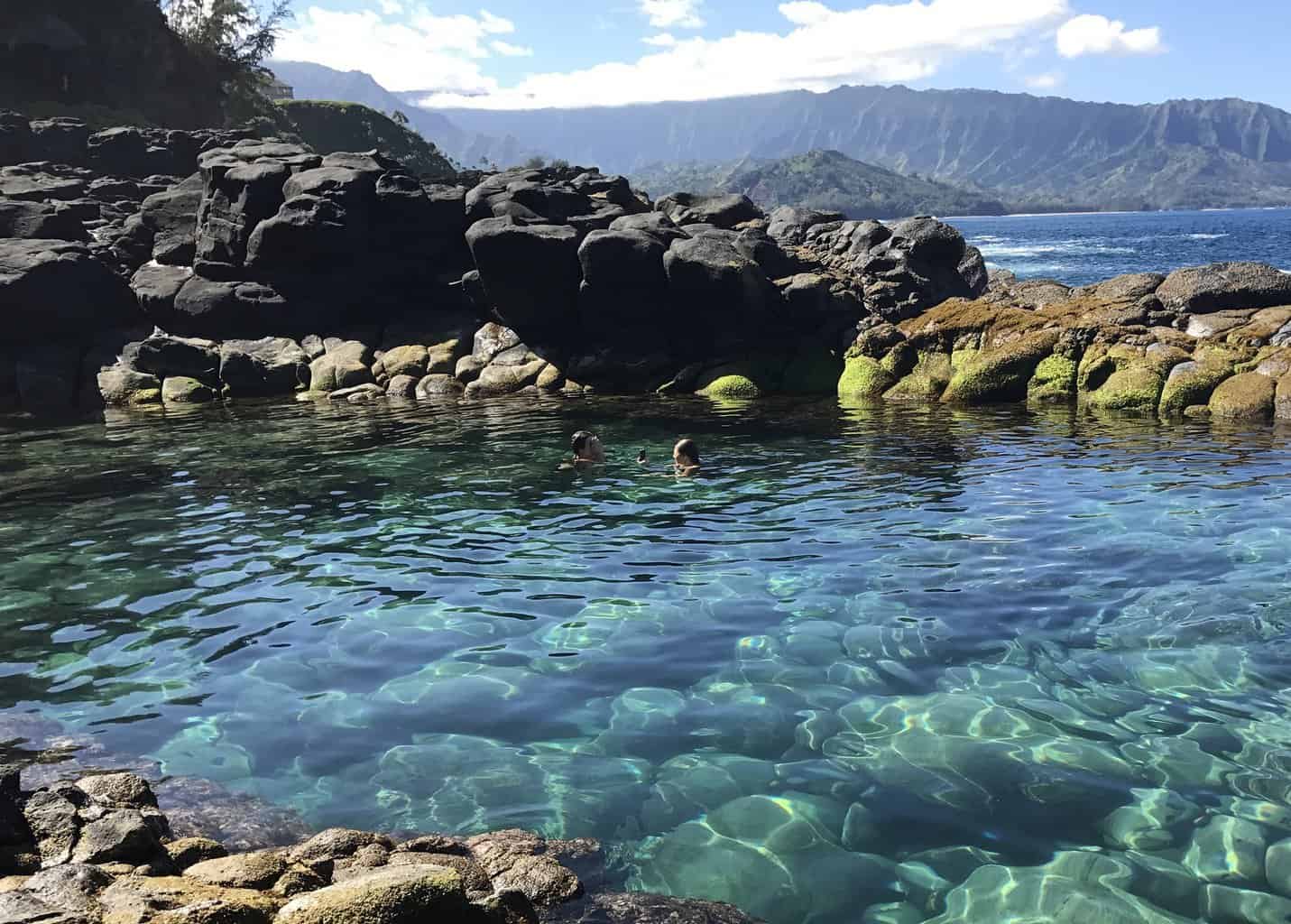
Back in 2018, Yayun Cheng, age 23, of California became the seventh drowning of that year. According to a preliminary report, Cheng was attempting to climb the rocks near the area known as Queen’s Bath shortly before noon on December 5th, when a wave came up and swept her out to sea. She was last seen unresponsive in the water. Cheng could not be located despite a three-day air, land, and sea-based search with a team of rescuers including Kauai firefighters, lifeguards, police and the U.S. Coast Guard.
You will get better conditions during the summer than the winter, but don’t let this false sense of confidence let your caution down.
How To Get To Queen’s Bath
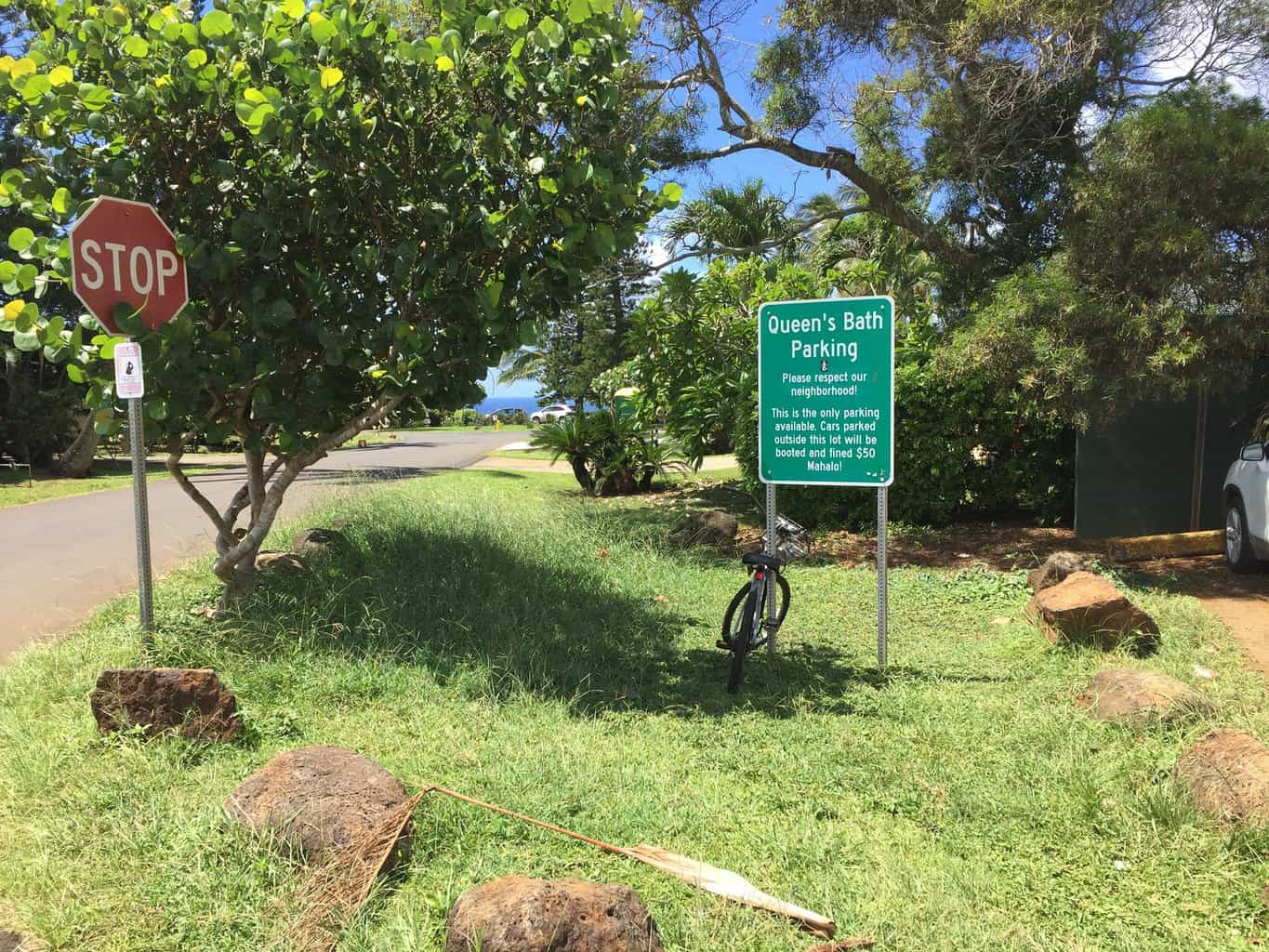
If you’re not staying in Princeville, you’re going to want to mostly take Kuhio Highway to reach it. Then exit off the highway into Ka Haku Road before taking that road to Punahele Road.
Parking for Queen’s Bath is in a residential area in the proximity of the St. Regis Princeville Resort, Hanalei Bay Resort, and the Wyndham Bali Hai Villas. The parking is near the end of Punahele Road, which is just off Ka Haku Road, the main road that runs through Princeville. There is usually not enough parking for the many visitors.
If you’re staying in the Princeville area it is probably better to just walk or take a bicycle to the Queen’s Bath trail.

Take Punahele Road to the Queen’s Bath parking area. Do not park anywhere except the official parking area near the trailhead. This means you shouldn’t park in yards or along the street.
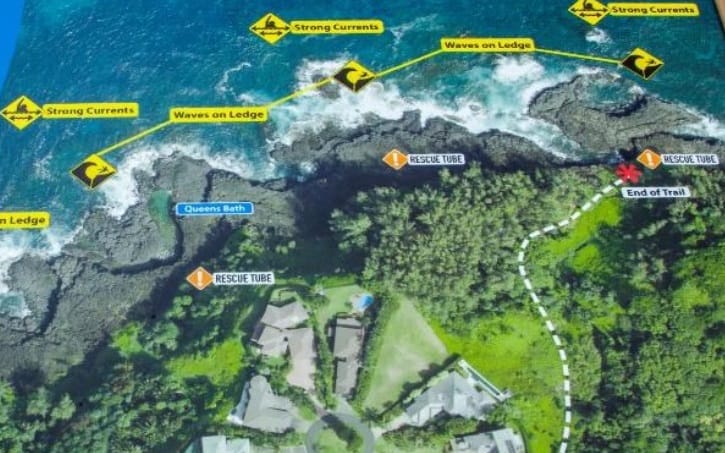
Once you park head over to the trailhead to start the 10-minute hike to Queen’s Bath. The trailhead is located to the right of the parking lot.

It’s a short hike from the parking area to the bottom of the trail at the coastline and about another five to ten minutes to walk along the coastline to Queen’s Bath.
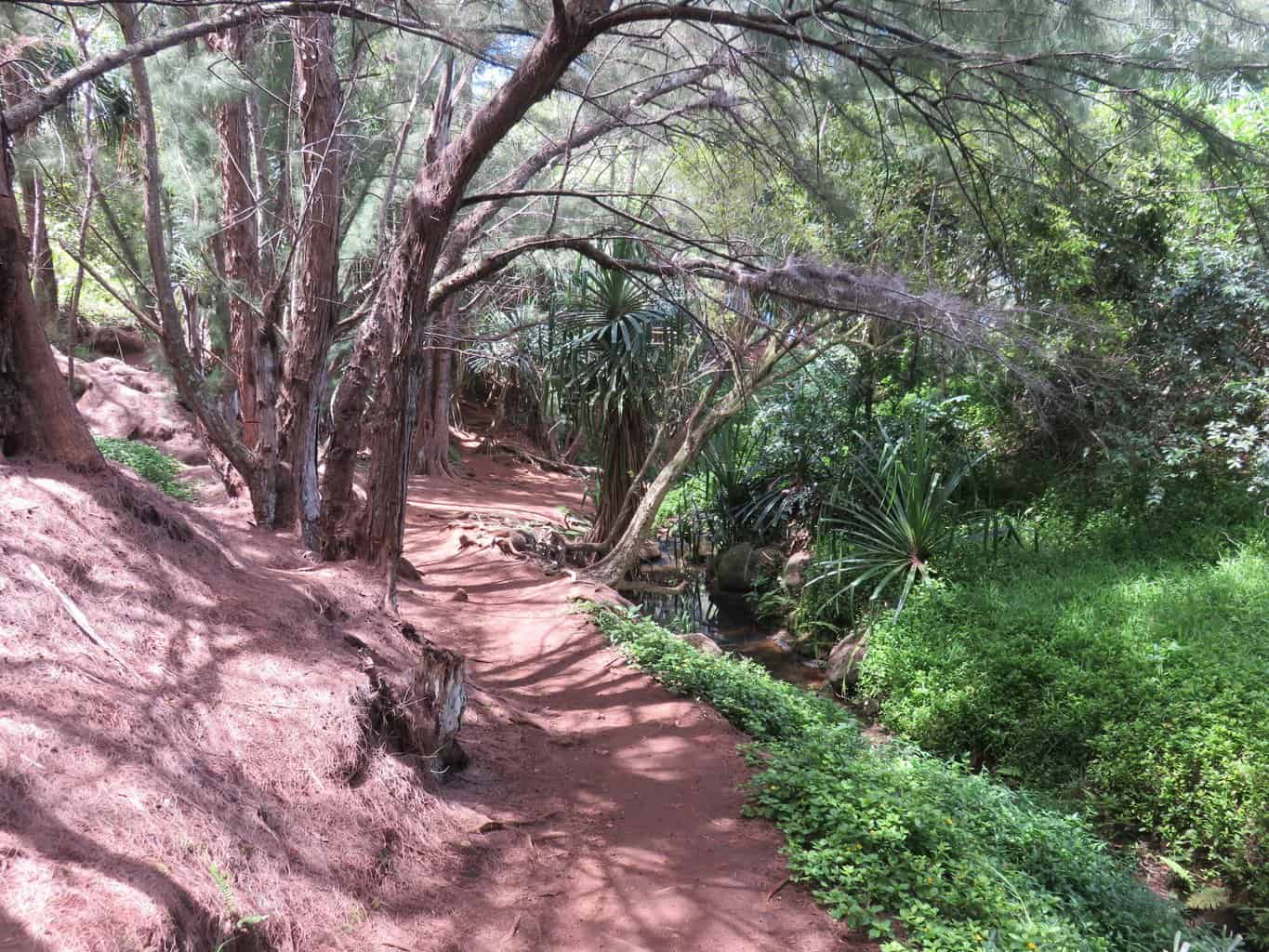
This Queen’s Bath Trail is very slippery when wet. The slippery path is picturesque and mostly shaded, and there is a waterfall near the bottom. Once at sea level, you will be on lava rock that must be navigated for several hundred meters to get to the bath.
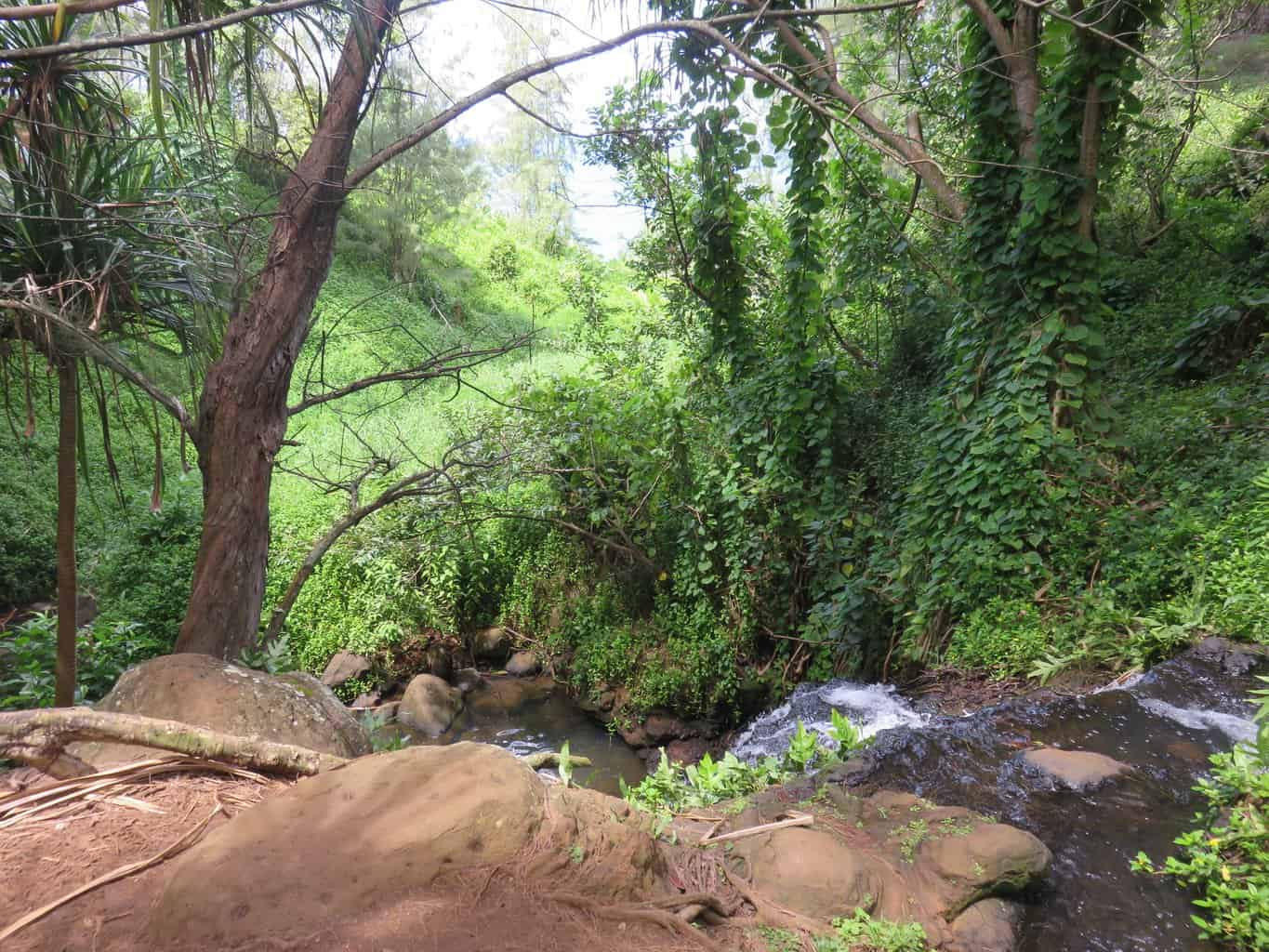
A waterfall can be found on the lower portion of the trail.
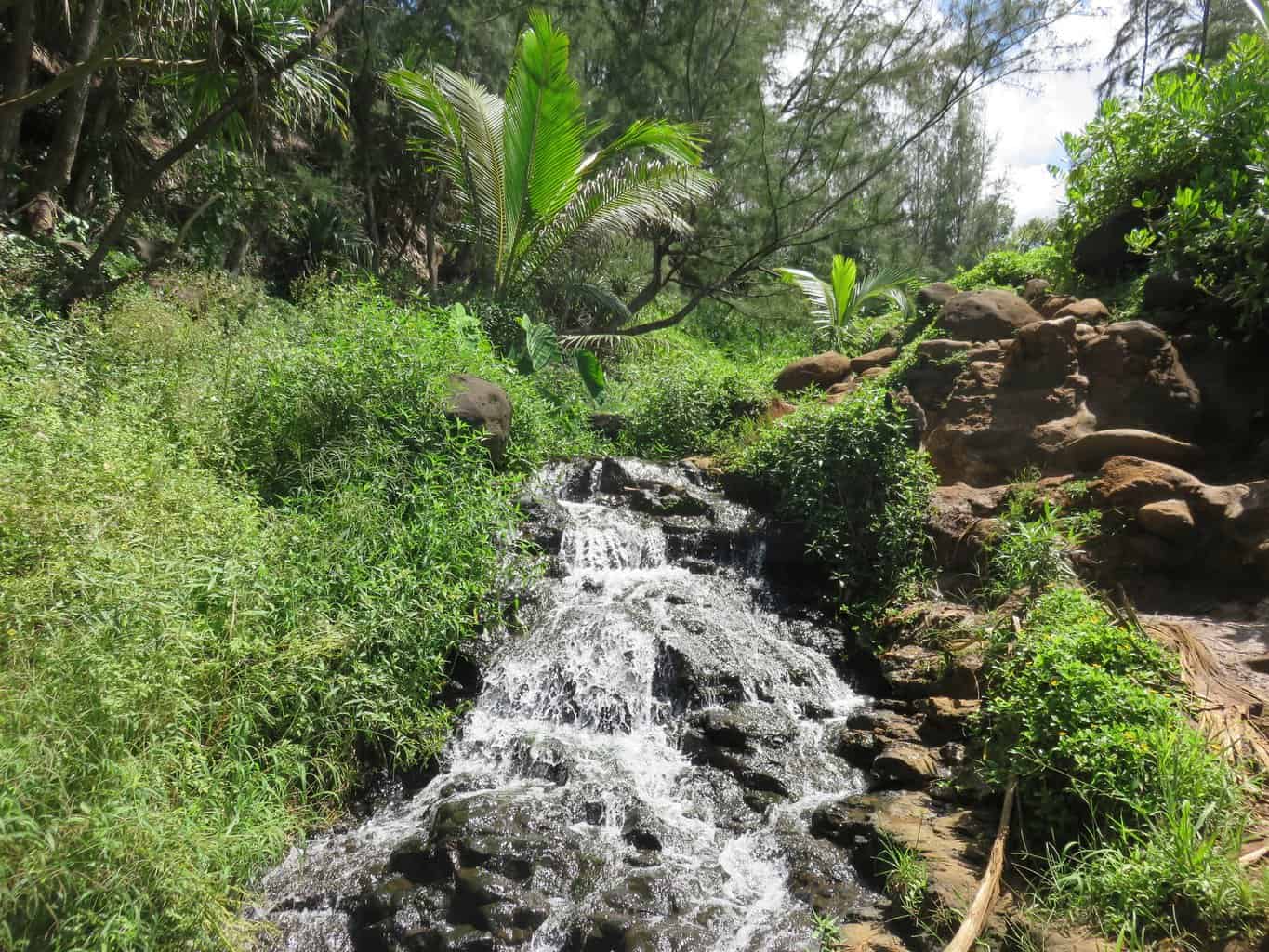
Heed the warnings and proceed with extreme caution here. Deaths and numerous injuries have occurred in the area. You can see the sign down below to remind you of how many people have drowned here.
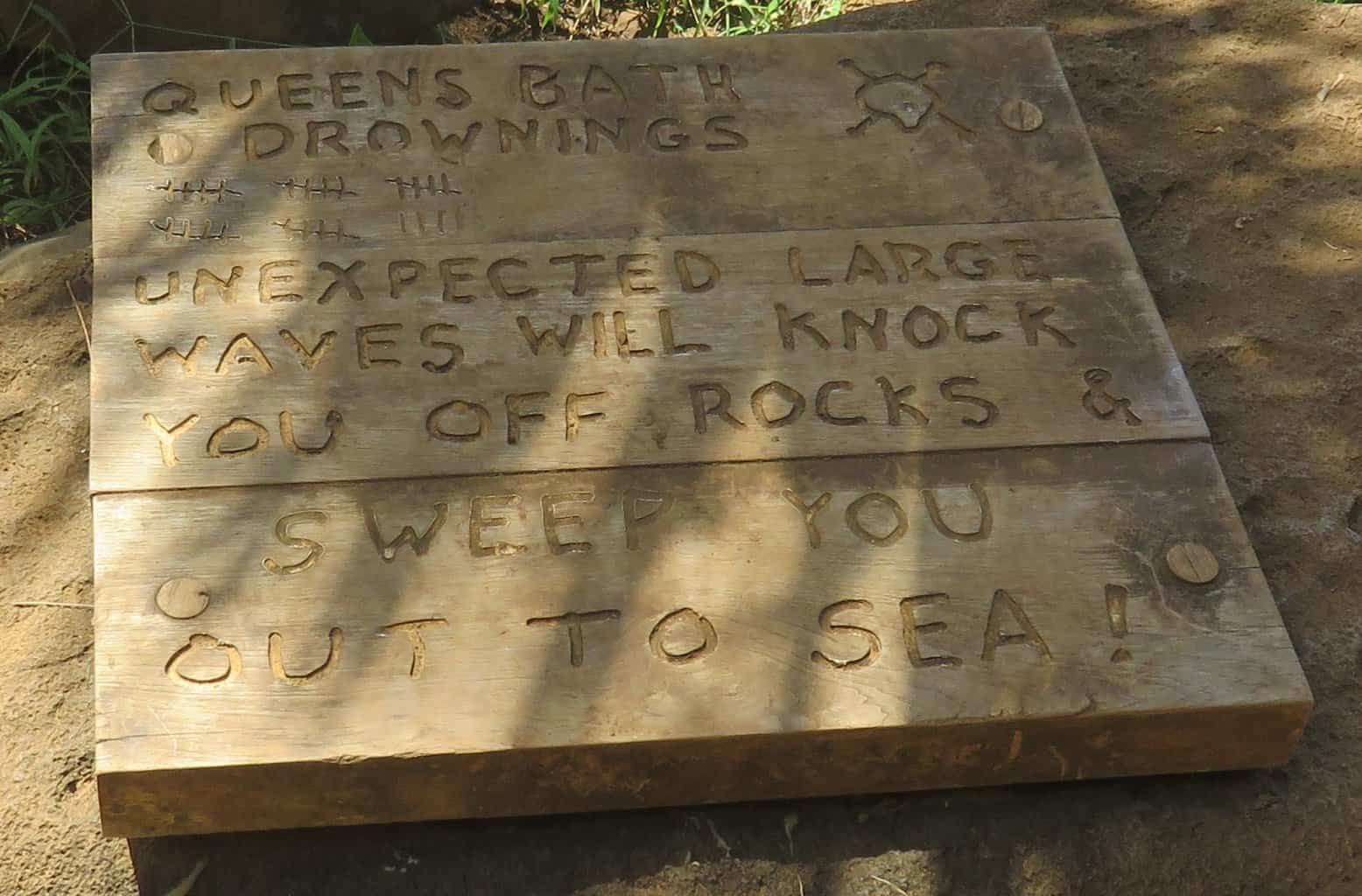
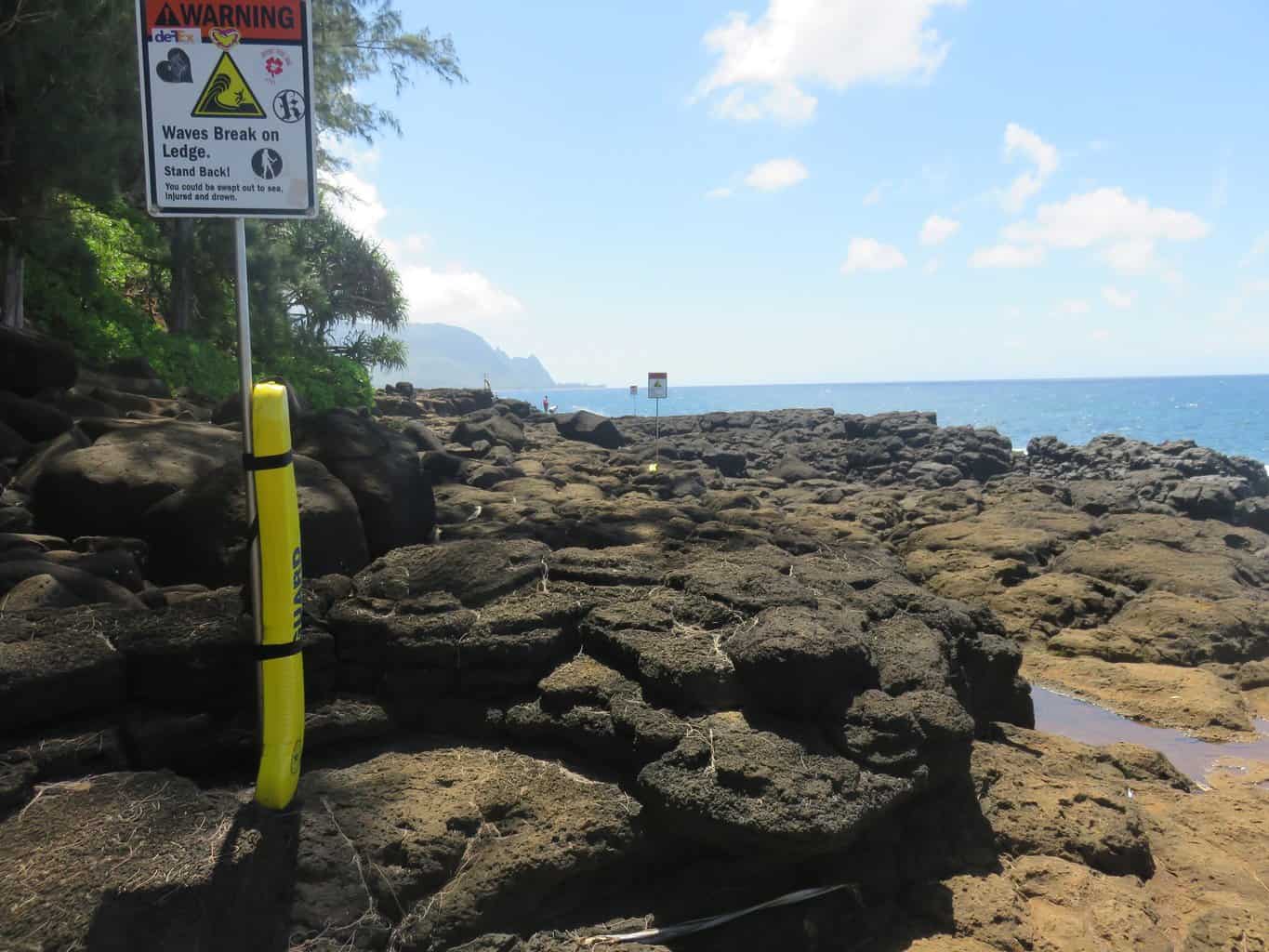
Safety tubes in the event of an emergency can be found along the coastline at Queen’s Bath. If the ground is wet then waves have reached this area. You should move back to a dry area if that’s the case. The safety tubes located on signs along the coast are there in the event of an emergency.
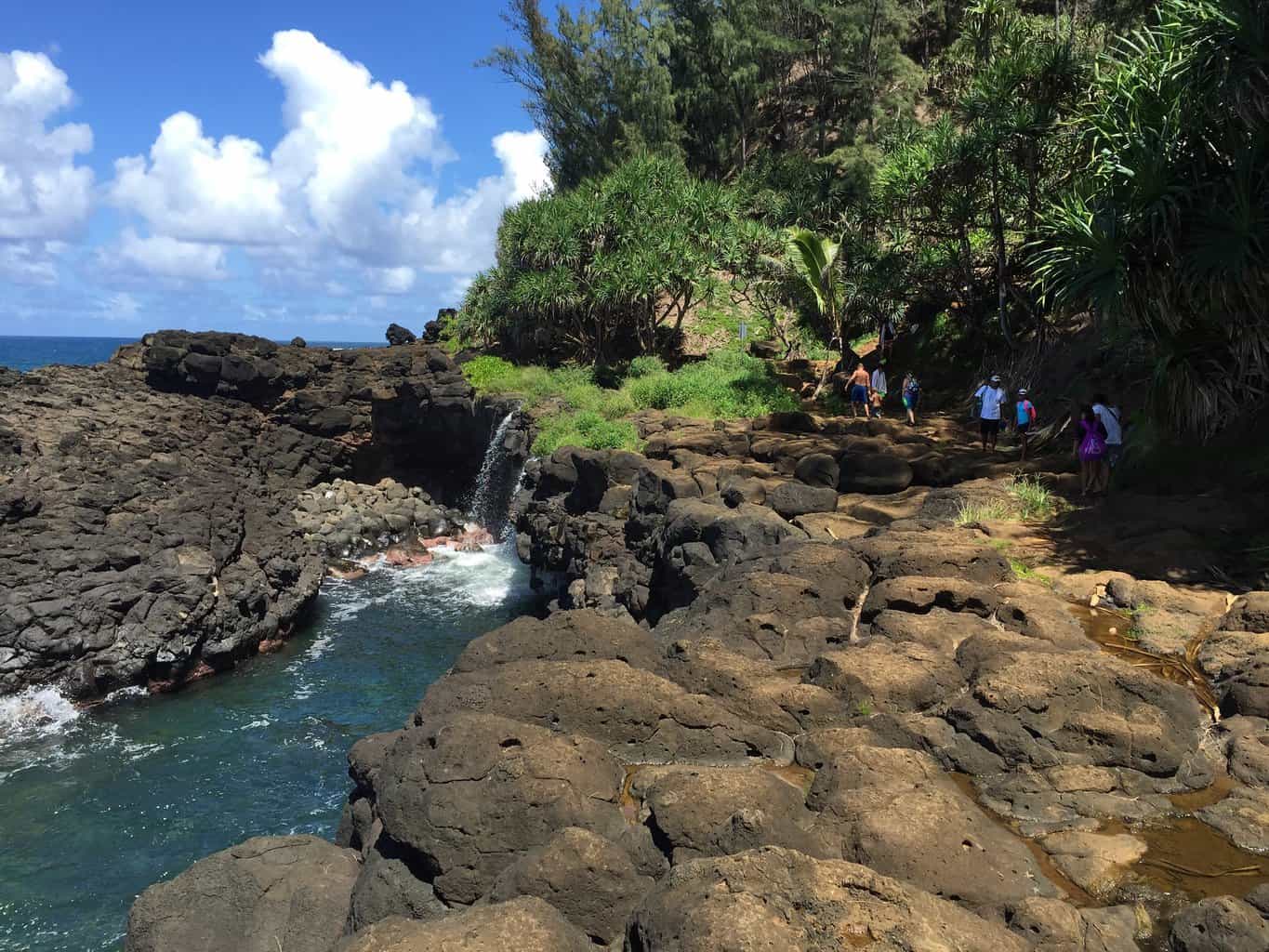
There’s another waterfall at the bottom of the trail.
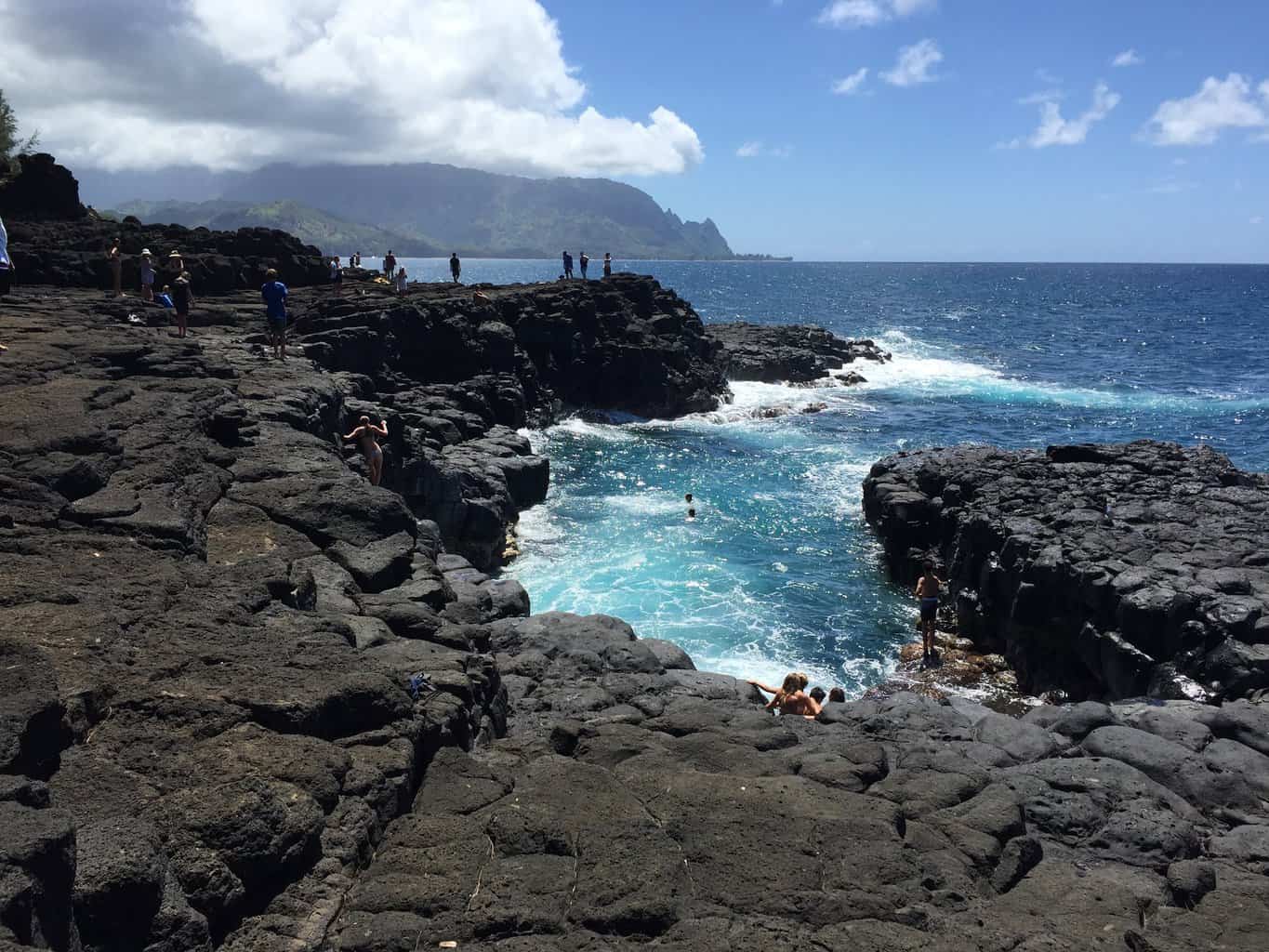
This is not Queen’s Bath but is actually known as the “Pool of Death,” the subject of a viral YouTube video. If the tide is low, you will first see an open tidepool (for lack of a better term), but that is not Queen’s Bath.
Keep going until you see the round pool. If conditions are calm, there might be dozens of people and even a few pets in and around the bath area.
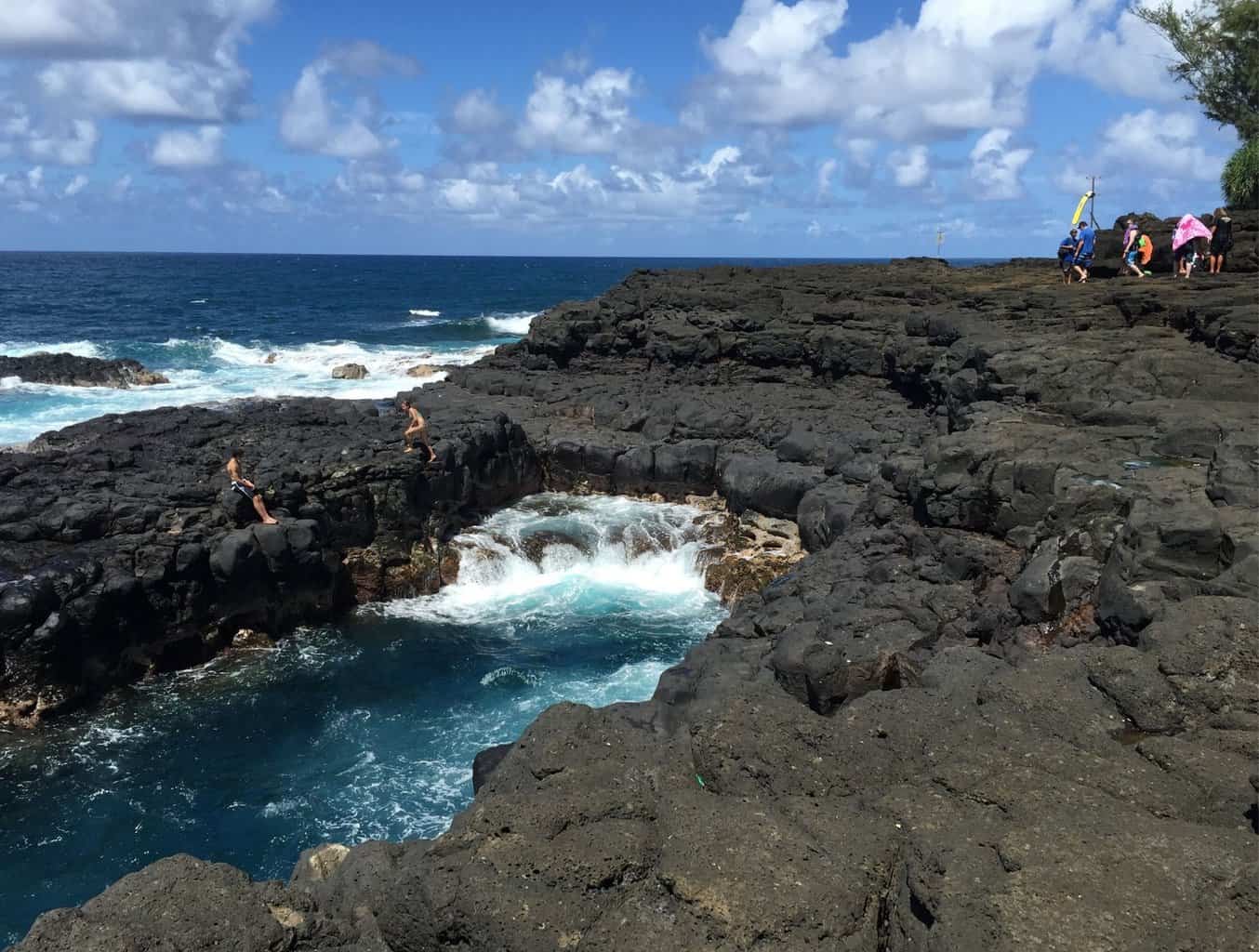
Once on the coastline, the path to the bath is jagged lava rock. These lava rocks are one of the things that stand out most along this attraction.
Queen’s Bath Photos
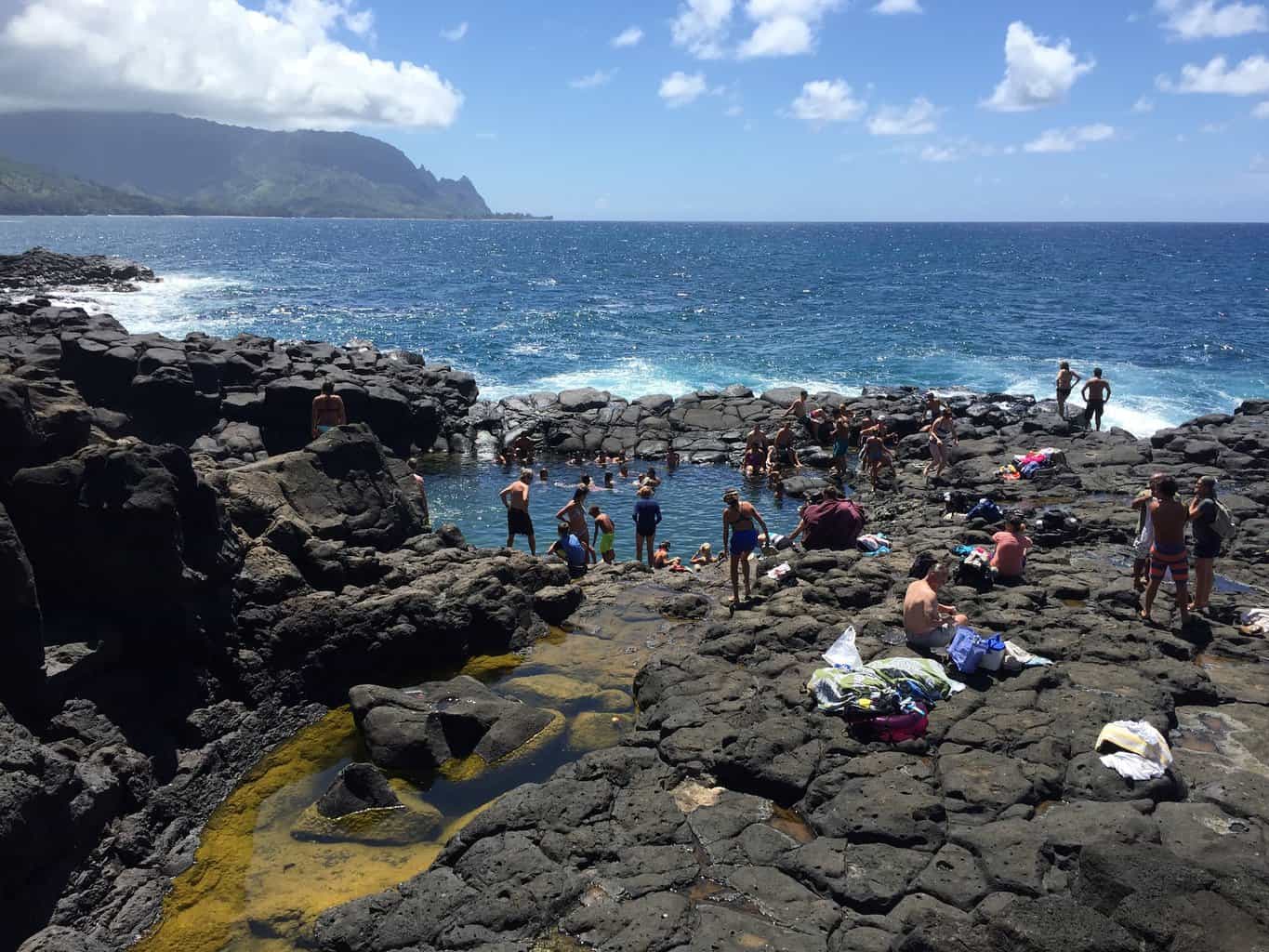
This is the actual Queen’s Bath on a calm summer day. In the winter months, the waters are often too turbulent for swimming, though rogue waves can strike at any time with strong currents.
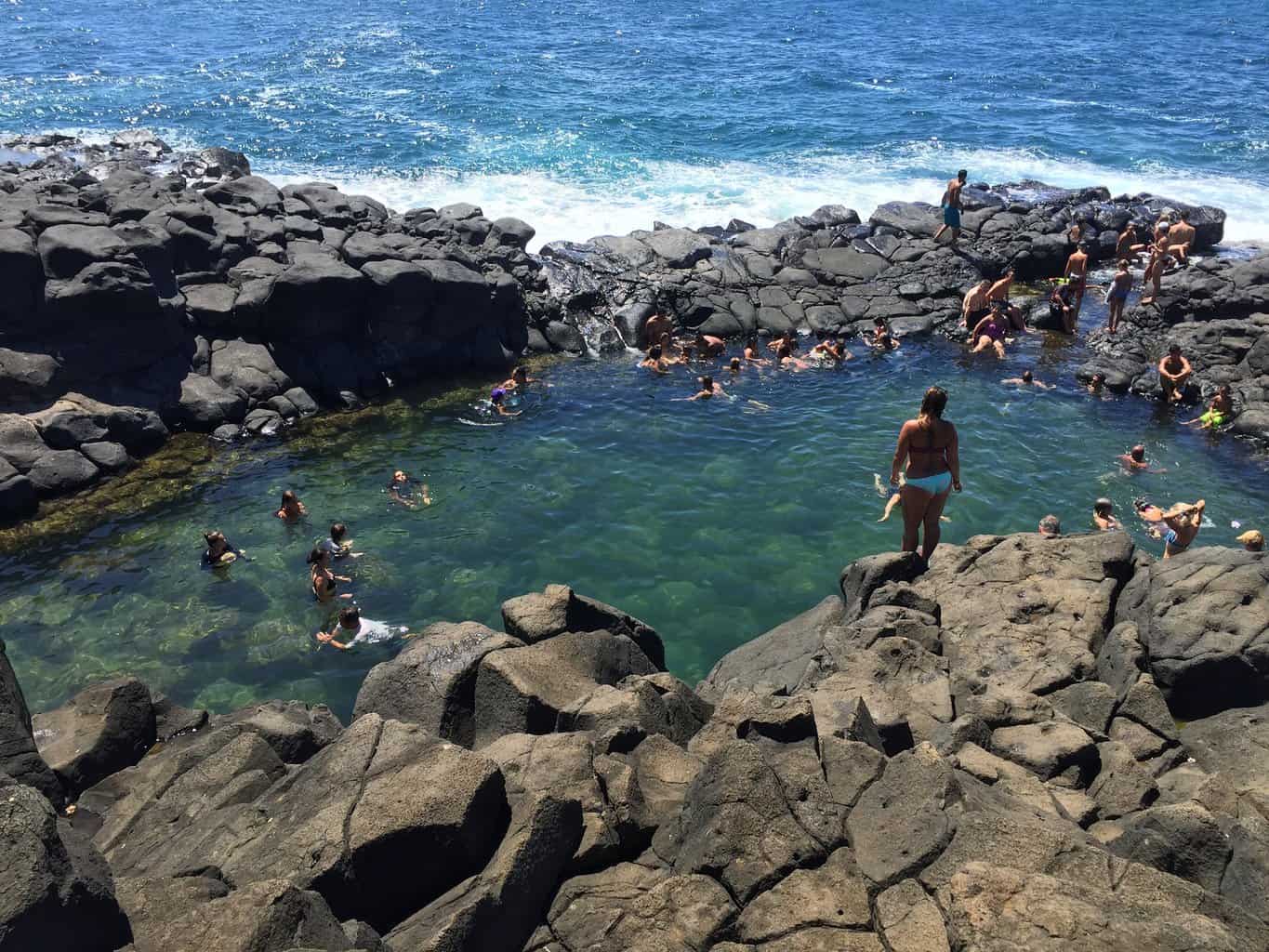
You can look closely to see a dog enjoying Queen’s Bath in the photo below. Before you go swimming, look online to see what the current ocean conditions are like and if it’s too dangerous to do so. Unless you’re a strong swimmer, it might be best to avoid it.
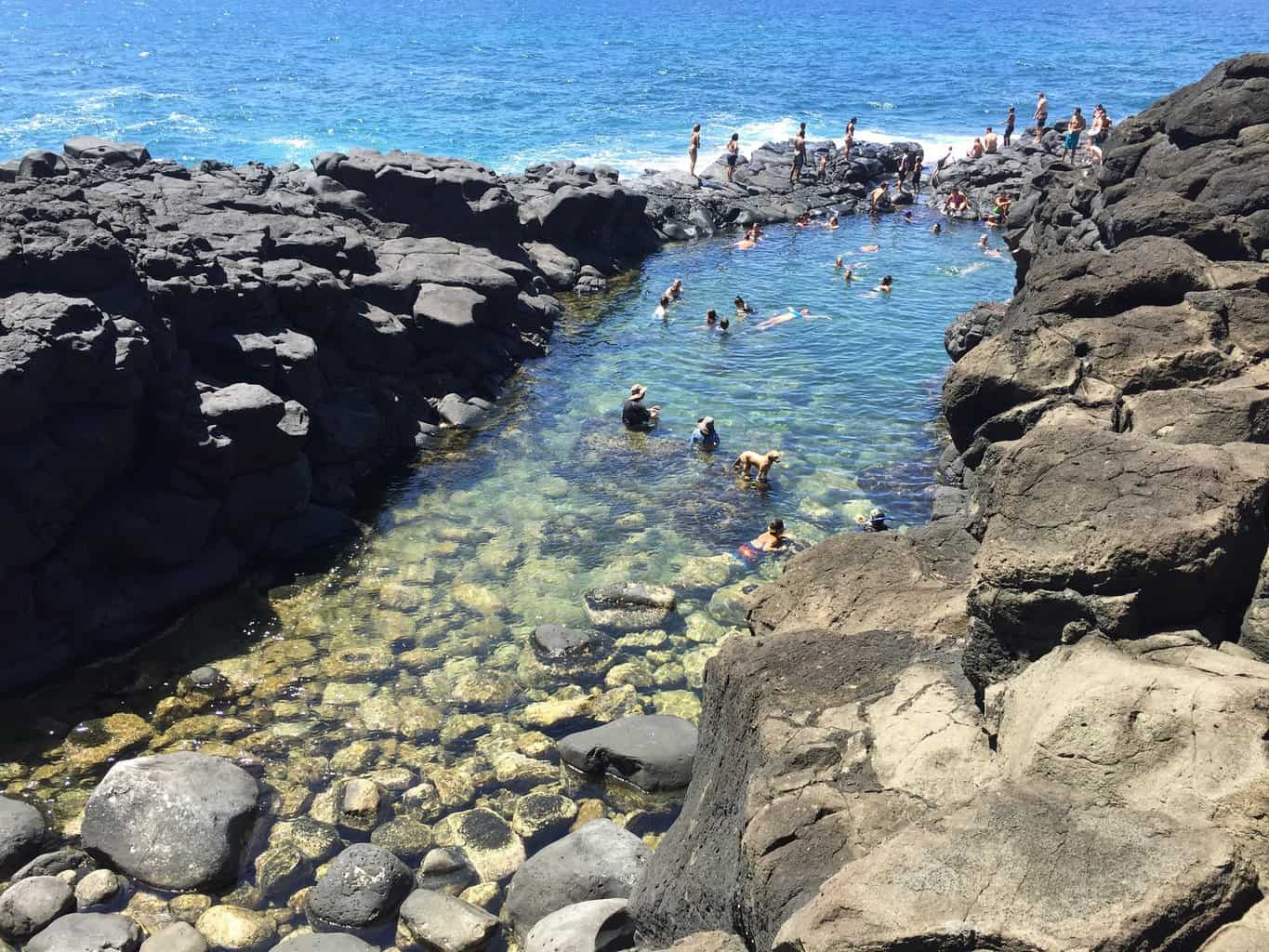
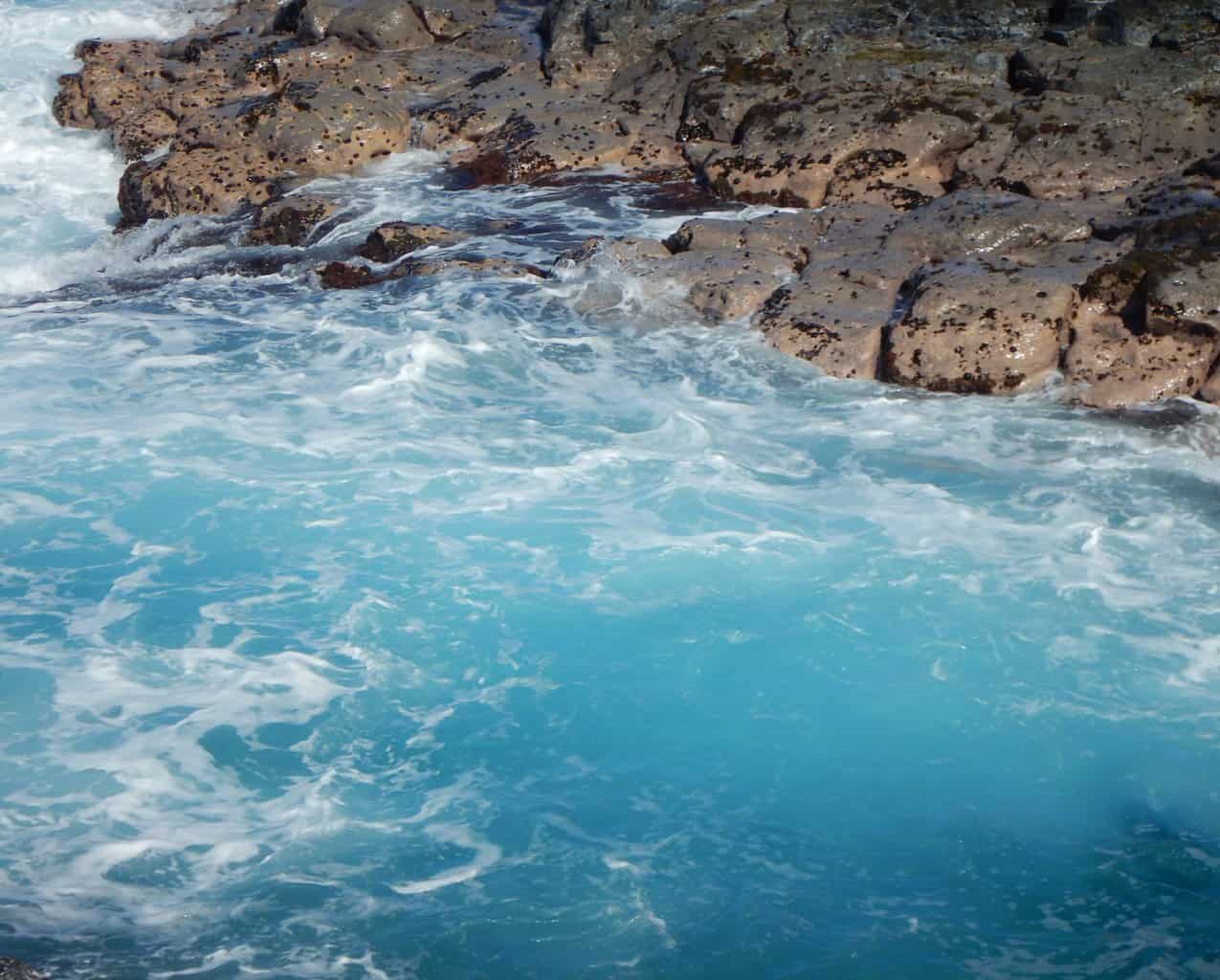
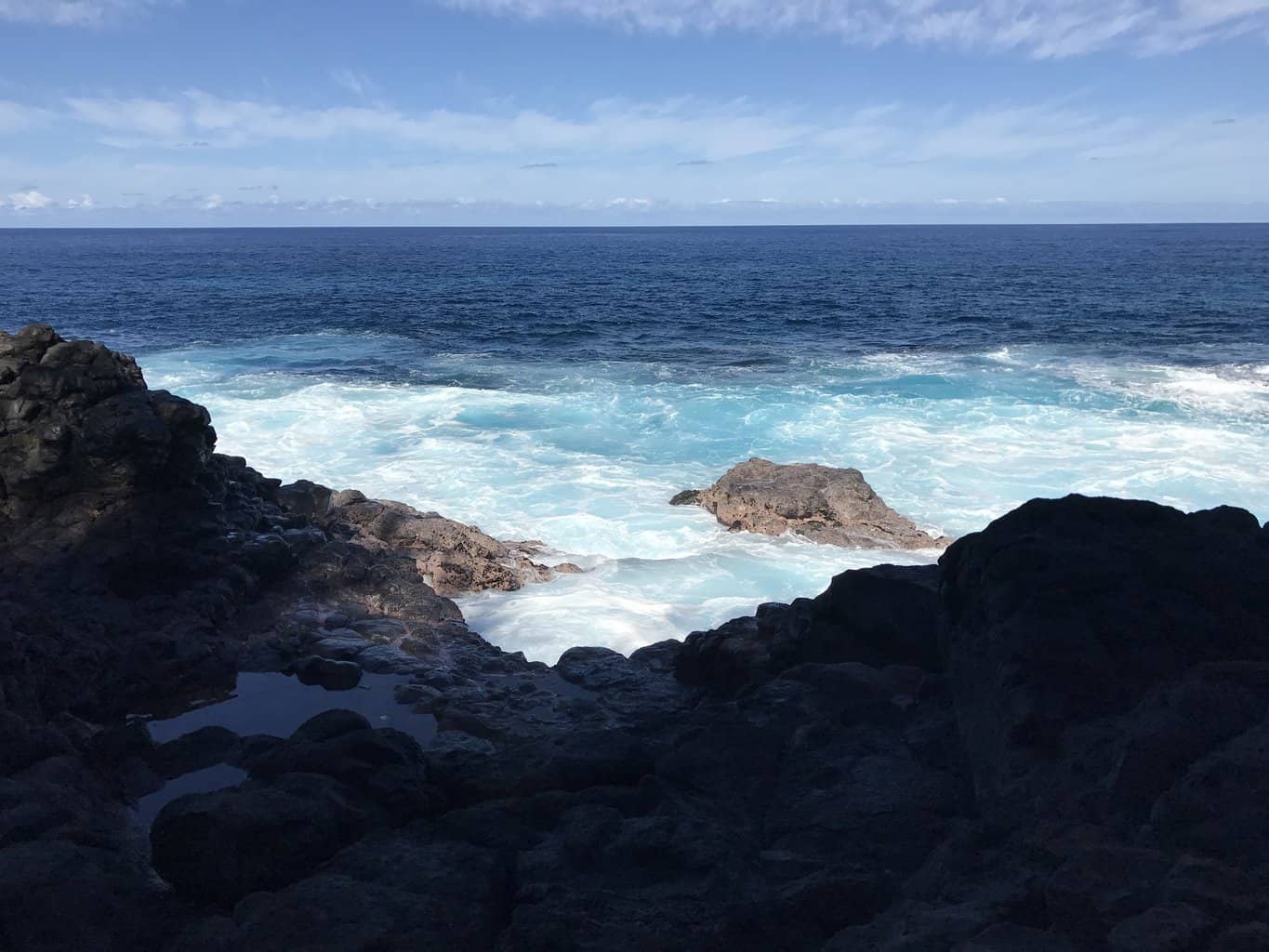

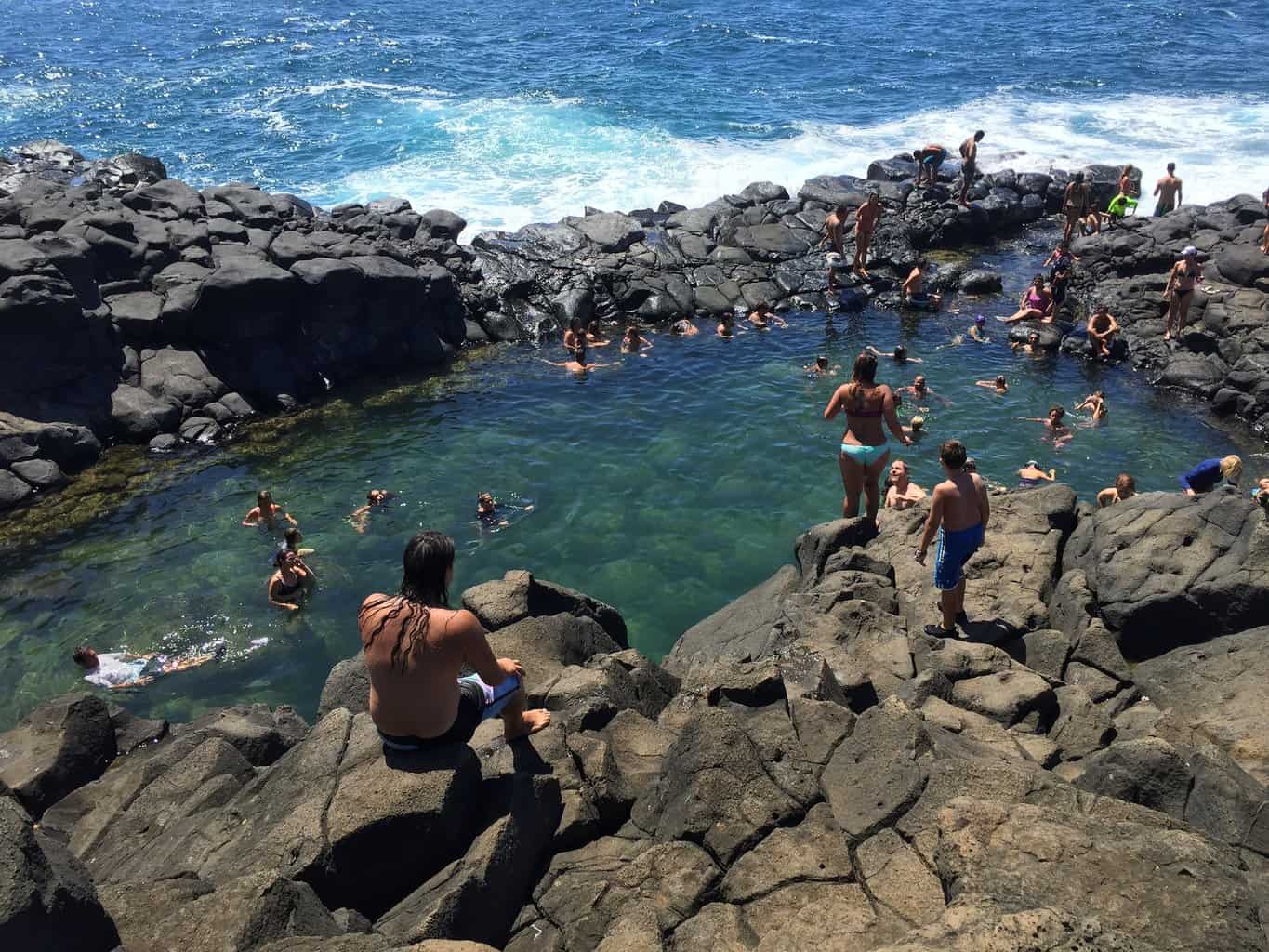
Leave a comment